- Affärsnyheter
- Alternativ hälsa
- Amerikansk fotboll
- Andlighet
- Animering och manga
- Astronomi
- Barn och familj
- Baseball
- Basket
- Berättelser för barn
- Böcker
- Brottning
- Buddhism
- Dagliga nyheter
- Dans och teater
- Design
- Djur
- Dokumentär
- Drama
- Efterprogram
- Entreprenörskap
- Fantasysporter
- Filmhistoria
- Filmintervjuer
- Filmrecensioner
- Filosofi
- Flyg
- Föräldraskap
- Fordon
- Fotboll
- Fritid
- Fysik
- Geovetenskap
- Golf
- Hälsa och motion
- Hantverk
- Hinduism
- Historia
- Hobbies
- Hockey
- Hus och trädgård
- Ideell
- Improvisering
- Investering
- Islam
- Judendom
- Karriär
- Kemi
- Komedi
- Komedifiktion
- Komediintervjuer
- Konst
- Kristendom
- Kurser
- Ledarskap
- Life Science
- Löpning
- Marknadsföring
- Mat
- Matematik
- Medicin
- Mental hälsa
- Mode och skönhet
- Motion
- Musik
- Musikhistoria
- Musikintervjuer
- Musikkommentarer
- Näringslära
- Näringsliv
- Natur
- Naturvetenskap
- Nyheter
- Nyhetskommentarer
- Personliga dagböcker
- Platser och resor
- Poddar
- Politik
- Relationer
- Religion
- Religion och spiritualitet
- Rugby
- Så gör man
- Sällskapsspel
- Samhälle och kultur
- Samhällsvetenskap
- Science fiction
- Sexualitet
- Simning
- Självhjälp
- Skönlitteratur
- Spel
- Sport
- Sportnyheter
- Språkkurs
- Stat och kommun
- Ståupp
- Tekniknyheter
- Teknologi
- Tennis
- TV och film
- TV-recensioner
- Underhållningsnyheter
- Utbildning
- Utbildning för barn
- Verkliga brott
- Vetenskap
- Vildmarken
- Visuell konst

European Pharmaceutical Review podcast
European Pharmaceutical Review’s podcasts interview some of the leading experts and scientists about the latest developments in the pharmaceutical and life science sectors.
26 avsnitt • Längd: 25 min • Oregelbundet
Om podden
European Pharmaceutical Review’s podcasts interview some of the leading experts and scientists about the latest developments in the pharmaceutical and life science sectors.
The podcast European Pharmaceutical Review podcast is created by European Pharmaceutical Review. The podcast and the artwork on this page are embedded on this page using the public podcast feed (RSS).
Avsnitt
EPR Podcast Episode 26 – Navigating Nitrosamine Impurities – Jason Brown, Adare Pharma Solutions

This episode covers the emergence of nitrosamine impurities in the pharmaceutical industry and what action is being taken to address it, including the latest guidance, across pharma companies as well as regulators.
Addressing nitrosamine contamination
Brown opens the conversation by summarising the current landscape of nitrosamine impurities since the initial discovery around five years ago. He explains that industry response has continually evolved, due to new data being released and informing best practice for companies looking to mitigate and prevent formation of these impurities in medicines.
He explains that last year, the issue of nitrosamines moved from a toxicological problem to a wider industry concern. Now, “we are starting to get a good idea of how many products on the market could be affected”.
When it comes to preventing nitrosamine formation in drug products, key challenges manufacturers are facing include knowing exactly what active pharmaceutical ingredients (APIs) can form nitrosamines, Brown explains. He specified that there is a lack of alignment on this issue between regulatory agencies and experts.
Having the right laboratory standards, equipment and personnel who are adequately informed is important in working to address the issue of nitrosamines”
Another major challenge is getting through the initial risk assessment for nitrosamines. There is still a “fundamental lack understanding…what exactly should be included in that risk assessment, and what it looks like,” Brown asserts, highlighting the importance of an inclusive risk assessment.
Having the right laboratory standards, equipment and personnel who are adequately informed is important in working to address the issue, Brown continues.
He also shares how technologies are “critical” to detecting nitrosamine impurities and recommends the best approaches in this area. Furthermore, he emphasises the importance of collaboration, spanning decisions made in quality to regulation, as well as considerations for reformulation strategies.
Finally, Jason looks ahead to the future and suggests how the industry can work to navigate nitrosamine impurities, for instance, over the next five years.
The post EPR Podcast Episode 26 – Navigating Nitrosamine Impurities – Jason Brown, Adare Pharma Solutions appeared first on European Pharmaceutical Review.
EPR Podcast 25 – FAIR Data in Pharma – Giovanni Nisato, Pistoia Alliance

In this podcast, Giovanni Nisato, project manager at the Pistoia Alliance discusses data integrity and the FAIR data principles. In this role, he coordinates FAIR Community of Experts, which created the FAIR Maturity Matrix.
Giovanni starts the conversation by defining data integrity and explaining why it is ‘mission critical’ for the pharmaceutical industry.
Next, the podcast introduces FAIR (Findable, Accessible, Interoperable, Reusable) data principles and explores how their adoption have evolved over the past decade.
“This year we celebrated the 10-year anniversary of the first workshop where those FAIR data principles were reformulated. And they were then published in 2016,” Giovanni says.
Since then, the pharmaceutical industry has seen a “move towards data centricity as a way of thinking.” But adoption of the FAIR data principles is not mainstream yet.
Adoption of FAIR data principles
Additionally, while the principles are increasingly recognised in academia and R&D, their implementation in the clinical domain is lagging behind.
While the principles are increasingly recognised in academia and R&D, their implementation in the clinical domain is lagging behind”
“I would say that the implementation of FAIR data principles is perhaps starting, but there’s a lot of room for improvement in the clinical space,” Giovanni reflects.
This is one area the Alliance has focused on, producing the FAIR4Clin guide that gives a comprehensive overview on FAIR resources in the clinical domain.
Giovanni also explains the FAIR Maturity Matrix, a framework developed to help organisations benchmark and assess their systemic level of FAIR maturity. The FAIR Maturity Matrix was co-created by members of the FAIR Community of Experts of the Pistoia Alliance. Giovanni presents seven key dimensions that make up the matrix: data, leadership, strategy, roles, processes, knowledge, and tools. He also introduces the six maturity levels of the framework.
Finally, Giovanni looks ahead, outlining two priorities that are needed to accelerate adoption of FAIR data principles in the industry.
About the speaker
 Giovanni Nisato is an expert in collaborative innovation management across organisations at the international level. He has over 20 years of experience in the industrial and public-private deep tech sectors. As a Project Manager with the Pistoia Alliance, he has facilitated the FAIR Community of Experts since 2022. Its aim is to co-create and maintain pre-competitive resources to foster the implementation of FAIR data principles in the life sciences ecosystem for the benefit of pharmaceutical companies, CROs, technology providers, and ultimately, patients.
Giovanni Nisato is an expert in collaborative innovation management across organisations at the international level. He has over 20 years of experience in the industrial and public-private deep tech sectors. As a Project Manager with the Pistoia Alliance, he has facilitated the FAIR Community of Experts since 2022. Its aim is to co-create and maintain pre-competitive resources to foster the implementation of FAIR data principles in the life sciences ecosystem for the benefit of pharmaceutical companies, CROs, technology providers, and ultimately, patients.
The post EPR Podcast 25 – FAIR Data in Pharma – Giovanni Nisato, Pistoia Alliance appeared first on European Pharmaceutical Review.
EPR Podcast 24 – Developing modifier gene therapy – Ocugen

Ocugen is utilising the modifier gene therapy technology approach to treat retinal diseases. The therapy can be used to treat both inherited disorders, such as retinitis pigmentosa (RP), Leber congenital amaurosis, and Stargardt disease, but also multifactorial diseases like dry age-related macular degeneration and angiographic atrophy.
The company’s lead candidate in modifier gene therapy, OCU400, is in Phase III trials for treatment of RP and Phase I/II for treatment of Leber congenital amaurosis.
In this episode, Dr Neena Haider, Faculty member at Harvard Medical School and founder of biotech company Shifa Precision and Dr Arun Upadhyay CSO of Ocugen discuss the development of modifier gene therapy.
What is a modifier gene therapy?
Neena starts by discussing the complexity of retinal diseases where multiple genes are involved.
About two to 3,000 genes – so about 10 percent of the genes in the genome – are involved in helping us see, Neena explains. “If there are mutations… in any one of these, it impacts how the retina functions.”
Modifier genes… have been identified and used to suppress or treat or attenuate disease.”
“If we look at retinitis pigmentosa, it’s known as a rare disease – affecting one in 4,000. However, there’s over 200 different roadmaps to get to this disease, meaning either different mutations in known genes or hundreds of different genes,” Neena says.
Modifier genes, which are “normal genes that modulate clinical outcomes by interacting with disease-causing genes,” have been identified and used to suppress or treat or attenuate disease.
Arun and Neena discuss the benefits and challenges of the modifier gene therapy approach, including the manufacturing considerations.
Future trends in gene therapy
The speakers also share their predictions for the gene therapy space. They anticipate a trend towards more gene agnostic approaches, combination therapeutics and alternative delivery technologies.
“What I see is the gene therapy approach is going to expand into the non-genetic area, primarily focused on metabolic disorders, neurological disorders, and other chronic disorders,” says Arun.
Neena adds: “We have already started on [an] upward trend. What I predict is that [the gene therapy] space is going to really explode in the most fascinating way … so we’re going to see better, more effective and sustained therapeutics.”
About the speakers
 Dr Neena Haider is Faculty at Harvard Medical School; Founder of Shifa Precision and Science Advisor in Congress. She was part of the human genome project and is an internationally recognised leader with over 50 publications, 3000 citations and a US patent issued for her invention of modifier gene therapy as a potentially curative therapy.
Dr Neena Haider is Faculty at Harvard Medical School; Founder of Shifa Precision and Science Advisor in Congress. She was part of the human genome project and is an internationally recognised leader with over 50 publications, 3000 citations and a US patent issued for her invention of modifier gene therapy as a potentially curative therapy.
 Dr Arun Upadhyay is Chief Scientific Officer and Head of Research & Development at Ocugen, where he leads R&D across the company’s gene, cell therapy and vaccines platforms. With over 20 years of experience in biotech, academia, and government, he’s known for innovative ocular drug delivery system development with 40 publications and 15 patents.
Dr Arun Upadhyay is Chief Scientific Officer and Head of Research & Development at Ocugen, where he leads R&D across the company’s gene, cell therapy and vaccines platforms. With over 20 years of experience in biotech, academia, and government, he’s known for innovative ocular drug delivery system development with 40 publications and 15 patents.
The post EPR Podcast 24 – Developing modifier gene therapy – Ocugen appeared first on European Pharmaceutical Review.
EPR Podcast 23 – Inspiring inclusion in pharma – Kylie Bromley, Biogen


Dr Kylie Bromley is Vice President and Managing Director, of Biogen UK and Ireland
In this episode, Dr Kylie Bromley, Vice President and Managing Director of Biogen UK and Ireland, talks about her career journey in the pharmaceutical sector, sharing personal experiences and lessons, and discussing industry efforts to inspire inclusion in the workplace.
After obtaining a PhD in pharmacology from the University of Melbourne, Australia, Kylie started her career in a clinical-research role in the pharmaceutical industry. In her 20+ year career she has held a number of diverse roles at several pharmaceutical companies before joining Biogen in 2016.
During her time at Biogen, Kylie has been involved in several initiatives that support women in their careers. In this podcast, she discusses her involvement in Biogen’s Women’s Impact Network (WIN), an employee resource group dedicated to supporting and empowering women within the organisation. She also reflects on her role as a founding member of Pharma Australia Gender Equity (PAGE), now the Pharma Australia Inclusion Group (PAIG).
Women in the pharma industry
Reflecting on her experiences, Kylie acknowledges both the progress made and the ongoing challenges, including the underrepresentation of women in senior leadership roles.
Citing data from a recent LinkedIn survey, Kylie states that, overall, female representation in the workforce globally is around 42 percent. However, this drops down to 32 percent for ‘senior leaders’ and then to 25 percent for C-suite.
“You’re getting more and more inequity as you…get to the more senior levels,” Kylie says. “I think there is a lot of work to be done, there’s no question.”
An opportunity to inspire inclusion in pharma?
When considering how opportunities drive great equality in the industry, Kylie notes the importance of investing in development, fostering allyship and promoting inclusive practices.
Organisations must ensure access to development, networking, and career opportunities – across the board – to create a truly equitable environment”
“We have two themes for International Women’s Day. There’s the UN theme, ‘Invest in women: accelerate progress,’ and then the International Women’s Day theme ‘Inspire Inclusion’,” says Kylie.
Organisations must ensure “access to development, networking and career opportunities – not just for women, but across the board – to create a truly equitable environment,” she explains.
Allyship is also fundamental in inspiring inclusion, but it cannot be achieved by one company alone.
“How do we come together as an industry to keep striving to lead the way? Because I do think that that’s the opportunity that this industry has…to be seen as absolute leaders on creating the most inclusive environment that we can.”
The post EPR Podcast 23 – Inspiring inclusion in pharma – Kylie Bromley, Biogen appeared first on European Pharmaceutical Review.
EPR Podcast 22 – Pharmaceutical packaging – Manu Kittanakere, Gilead

In this episode, Caroline speaks to Manu Kittanakere, Associate Director of Packaging Engineering at Gilead, about the pharmaceutical packaging landscape. Manu reflects on the changes he has witnessed in pharmaceutical packaging over his 17-year career.
“There is a lot of dynamic change happening with supply chain regulations, which has a direct impact on packaging,” Manu says.
He also explains how pharmaceutical packaging sector has evolved significantly over that period, with the growth of contract manufacturing/packaging organisations and an increased emphasis on sustainability, automation, and innovation.
Pharmaceutical packaging: the landscape and challenges today
Packaging plays a crucial role in preserving medications and ensuring patient adherence. Manu speaks about a range of packaging options on the market, including the use of bottles, blister packs, vials, and pre-filled syringes/autoinjectors.
In the oral solid dose (OSD) space, the bulk of pharmaceuticals rely on HDPE bottles or blister packaging”
In the oral solid dose (OSD) space, the bulk of pharmaceuticals rely on HDPE bottles or blister packaging. However, regional and company preferences do vary.
“What I have observed is that…in the US, bottles are preferred compared to blisters. But in Europe and Japan, blisters are preferred,” Manu says.
“Vial kits, pre-filled syringes and auto injectors are also gaining a lot of traction with biologics being one of the main focuses in the coming years,” he adds.
Finally, there have been advancements in the cold chain packaging to meet the needs of cell and gene therapies and other biologics.
Sustainability: a focus for 2024 and beyond
Looking to the future, Manu predicts that sustainability will be a major focus in the pharmaceutical industry in 2024.
Additionally, packaging developers and engineers will increasingly leverage virtual simulation and smart software to support packaging design.
Looking further ahead, Manu projects innovations in desiccants, materials, and smart packaging. Listen to the full podcast to find out more!
About the speaker
 Manu Kittanakere, MS is Associate Director, Packaging Engineering at Gilead Sciences. He Joined Gilead in October of 2022 and is responsible Gilead’s clinical programmes from a packaging development perspective. Manu and his team support about 20+ Gilead clinical programmes and manage the packaging CMOs and vendors.
Manu Kittanakere, MS is Associate Director, Packaging Engineering at Gilead Sciences. He Joined Gilead in October of 2022 and is responsible Gilead’s clinical programmes from a packaging development perspective. Manu and his team support about 20+ Gilead clinical programmes and manage the packaging CMOs and vendors.
Manu has over 17 years of experience in Pharmaceutical and Medical Device Packaging. He joined Gilead Sciences following tenures with Kala Pharmaceutical, Alnylam Pharmaceutical and bluebird bio where he held roles in multiple facets of packaging including QA pack & label, external manufacturing focused on Packaging & Labelling and head of packaging technologies department. Manu holds a patent in Glass vial packaging design for Valor glass WIP packaging.
Manu obtained his academic training at Visveswaraya Technological University, India (BS, Printing Technology), Rochester Institute of Technology (MS, Packaging Science) and Cornell University (Executive Leadership).
The post EPR Podcast 22 – Pharmaceutical packaging – Manu Kittanakere, Gilead appeared first on European Pharmaceutical Review.
EPR Podcast Episode 21 – Biosimilars – Salim Benkhalifa, Celltrion Healthcare France
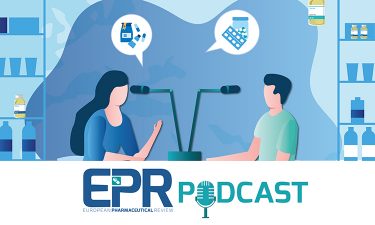
Biosimilars are similar to reference biological medicines and must demonstrate no clinically meaningful differences in terms of efficacy, safety, and quality.
In this episode, Dr Salim Benkhalifa, Medical Affairs Lead for Celltrion Healthcare France, discusses the benefits of using biosimilars, how the adoption challenges can be overcome and looks ahead to future innovations in the industry.
The main benefit of using biosimilars is cost savings, Salim explains, noting this can “increase patient access to treatment and allow for investment in innovation.”
Having biosimilars can also help prevent shortage of medication, for example if one pharmaceutical company faces supply chain issues, there is an alternative allowing continuity of access to patients.
Three main challenges of biosimilars adoption
Industry is working to overcome challenges through standardised regulatory guidelines, education campaigns, and improved reimbursement processes”
Salim highlights three main challenges facing biosimilars: regulatory barriers, lack of understanding and procurement challenges. The industry is working to overcome these challenges through standardised regulatory guidelines, education campaigns, and improved pricing and reimbursement processes.
Discussing the regulatory framework, Salim points out different approaches by the European Medicines Agency (EMA) and the US Food and Drug Administration (FDA) in their assessment of biosimilars. He shares an example of how Celltrion had to follow different pathways for approval of its subcutaneous formulation of biosimilar infliximab in these two markets.
He also shares how Celltrion’s healthcare professional outreach campaign – launched 10 years after the first monoclonal antibody biosimilar was approved in Europe – is helping to improve awareness.
“There is still an education [piece] to explain to healthcare providers and to the patient… the importance of biosimilars, why we need biosimilars and to reassure also on their… quality, efficacy and safety,” Salim notes.
Looking to the future of biosimilars
Future innovations…may include expanded therapeutic areas”
Future innovations in the biosimilar space may include expanded therapeutic areas, improved administration methods, and reduced immunogenicity.
“Budget savings remain one of the key objective of payers,” says Salim, noting that innovation of biosimilars can lead to improvements for patients. “Due to technological advances, further innovation in biologic development has resulted in medicines that offer benefit [beyond] those offered by a reference product.”
Developing subcutaneous formulations, for example, can reap benefits for both patients and healthcare systems, giving patients the ability to self-administer at home, rather than travelling to hospital for IV infusions.
Listen to the full podcast to learn more!
About the speaker
 Dr Salim Benkhalifa is Medical Affairs Lead for Celltrion Healthcare France. With university degrees in immunology and IBD, Dr Salim Benkhalifa is a medical doctor with an MBA. He has previous experience at Pfizer, as medical manager at local and international level in rheumatology and IBD, as well as global medical director in dermatology. Dr. Salim Benkhalifa also held a post at Abbvie as Medical affairs lead for France in IBD and Rheumatology.
Dr Salim Benkhalifa is Medical Affairs Lead for Celltrion Healthcare France. With university degrees in immunology and IBD, Dr Salim Benkhalifa is a medical doctor with an MBA. He has previous experience at Pfizer, as medical manager at local and international level in rheumatology and IBD, as well as global medical director in dermatology. Dr. Salim Benkhalifa also held a post at Abbvie as Medical affairs lead for France in IBD and Rheumatology.
The post EPR Podcast Episode 21 – Biosimilars – Salim Benkhalifa, Celltrion Healthcare France appeared first on European Pharmaceutical Review.
EPR Podcast 20 – RNAi Therapeutics – Paul Nioi, Alnylam Pharmaceuticals

RNA interference (RNAi) medicines that can ‘silence’ or turn off the production of specific genes that cause or contribute to disease, are one of the exciting emerging modalities in drug development today.
In this episode, EPR Editor Caroline Peachey catches up with Dr Paul Nioi, Vice President of Discovery and Translational Research at Alnylam Pharmaceuticals to explore clinical development and manufacturing of RNAi medicines for large patient populations.
History and evolution of RNAi

Paul Nioi, Vice President of Discovery and Translational Research at Alnylam Pharmaceuticals
Founded in 2002, Alnylam Pharmaceuticals is developing around a dozen investigational RNAi therapeutics, in the areas of genetic medicines, cardio-metabolic diseases, infectious diseases, and central nervous system/ocular diseases.
Paul reflects on the evolution of RNAi therapeutics in the pharmaceutical landscape. Initially, few companies were working on RNAi, but interest and activity have grown significantly, with both startups and established pharmaceutical companies now exploring its potential, Paul explains.
The technology has primarily focused on rare diseases, but there is growing momentum to apply RNAi to more common conditions.
“When we began on this journey, there was a very, very solid focus on rare disease,” Paul says.
In contrast, today you can see “a crop of medicines for more common conditions [like hypertension and Type 2 diabetes] starting to come through the pipeline.”` Since this podcast was recorded Alnylam and Roche have agreed to jointly develop and commercialise an RNAi therapeutic as a treatment for hypertension.
Benefits and challenges of developing RNAi medicines
The main benefit of RNAi medicines is their ability to target potentially any gene in the genome, including targets that are “undruggable” by small molecules and antibodies, explains Paul. The duration of action can extend from six to 12 months with a single subcutaneous injection.
“We hope this translates into better outcomes because you have consistency in silencing the gene as opposed to taking the pill one day, forgetting the next,” Paul says.
The liver has been a successful target due to its involvement in various diseases, but expanding delivery to other tissues remains a challenge,
One major challenge discussed is the delivery of RNAi therapeutics to specific cells and tissues. The liver has been a successful target due to its involvement in various diseases, but expanding delivery to other tissues remains a challenge. Different approaches have been explored, including encapsulating RNA in lipid nanoparticles for intravenous delivery and modifying nucleotides to enhance stability and enable targeting to specific cells, notes Paul.
Looking ahead, Paul envisions advances in delivery methods to target a wider range of tissues, making RNAi medicines more routine in clinical practice and the emergence of related technologies like gene editing and mRNA delivery.
Listen now to this exclusive podcast to learn more!
About the speaker
Paul Nioi, PhD is Vice President, Discovery and Translational Research at Alnylam Pharmaceuticals. He joined Alnylam in March 2018 and is responsible for leading the Discovery and Translational Research function. He has overall responsibility for new target identification/validation, biomarkers and all preclinical drug discovery programmes.
Paul has over 18 years of biotech and pharma experience. He joined Alnylam following a tenure at Amgen and deCODE genetics where he held roles of increasing responsibility. Most recently he was Director of the Translational Systems Biology group and led a large team that was focused on making discoveries from human genetics to influence target selection.
Paul obtained his academic training at the University of Edinburgh (BSc, Pharmacology) and the University of Dundee (PhD, Molecular Biology).
The post <em>EPR</em> Podcast 20 – RNAi Therapeutics – Paul Nioi, Alnylam Pharmaceuticals appeared first on European Pharmaceutical Review.
EPR Podcast 19 – Collaboration in microbiology – Allison Scott, Lynn Johnson and Miriam Guest, M³ Collaboration

The Modern Microbial Methods Collaboration or M3 Collaboration brings together participants from across industry with the goal of modernising pharmaceutical microbiology.
In this episode, Alison Scott, Lynn Johnson, and Miriam Guest, introduce the work of the group and discuss how it is working to address common challenges facing industry.
Established in 2021, the M3 collaboration consists of a steering committee and three sub-teams. The steering committee helps guide the group, and the sub-teams focus on specific topics such as biofluorescent particle counting, understanding baseline counts and setting alert levels, and developing communication tools for modern methods.
How does collaboration in microbiology benefit industry?

Allison Scott is Principal Scientist, MicronView. M3 Collaboration Steering Committee and Sub-Team #3 Facilitator
The collaboration supports industry by promoting knowledge sharing and learning among participants. It allows for open dialogue and problem-solving, facilitates the adoption of modern microbial methods, and provides a platform for communication and collaboration across different companies and backgrounds.
“From our perspective at AstraZeneca, we are really valuing the cross-industry collaboration that we’re seeing in the non-competitive space,” says Miriam Guest, Principal Microbiologist,
Pharmaceutical Technology & Development, AstraZeneca, who initially joined as a member of the Online Water Bioburden Analyzer (OWBA) Working Group.
“We’ve got hundreds of years of [combined] experience across all of the members of this collaboration and so many different backgrounds,” adds Allison Scott, M3 Collaboration Steering Committee and Sub-Team #3 Facilitator.
Another benefit is that there are no costs associated with joining the M3 Collaboration “it’s truly just people volunteering their time, sharing ideas”, explains Lynn Johnson, Senior Scientist, Microbial Control and Viral Safety, National Resilience, Inc and Member of M3 OWBA working group.
Addressing industry challenges

Miriam Guest, Principal Microbiologist, Pharmaceutical Technology & Development, AstraZeneca
The M3 collaboration listens to what’s happening in industry to help form or influence what it’s working on.
“Adoption of new technologies has always been a challenge in this industry,” explains Allison. As modern methods can take a lot of time and be expensive to adopt, seeing other companies succeed can be ‘very beneficial’ – they can share their success, they can share the challenges that they’ve overcome, and this really helps lead the industry forward.
Data integrity is seen as an emerging issue. “We are certainly seeing trends with our auditors and regulators looking at data integrity across the whole quality control platform. And when you review the published warning letters on the FDA [US Food and Drug Administration] website, you know data integrity in the microbiology lab is a real issue,” says Miriam.
“There is definitely more adoption of modern microbial methods,” adds Lynn. “I think it’s a critical time right now to be able to share our ideas, how we’re getting things moving forward and implementation strategies.”

Lynn Johnson, Senior Scientist, Microbial Control and Viral Safety, National Resilience, Inc is member of the M3 OWBA working group
Another area where the collaboration is supporting industry is in developing a holistic contamination control strategy,” adds Lynn, noting that the collaboration is working to provide tools and templates to help address some of these challenges.
The M3 collaboration has made progress in several areas, including on developing a User Requirement Specification template, working on several articles and presenting at industry events.
Through this work it is contributing to the advancement of modern microbial methods and driving innovation in pharmaceutical microbiology through industry collaboration and knowledge exchange.
About the speakers
Allison Scott is Principal Scientist, MicronView. M3 Collaboration Steering Committee and Sub-Team #3 Facilitator
Lynn Johnson, Senior Scientist, Microbial Control and Viral Safety, National Resilience, Inc and Member of M3 Online Water Bioburden Analyzer Working Group
Miriam Guest, Principal Microbiologist, Pharmaceutical Technology & Development, AstraZeneca and former member of the M3 OWBA Working Group.
The post <em>EPR</em> Podcast 19 – Collaboration in microbiology – Allison Scott, Lynn Johnson and Miriam Guest, M³ Collaboration appeared first on European Pharmaceutical Review.
EPR Podcast Episode 18 – Embracing continuous manufacturing – Trish Hurter, Lyndra Therapeutics

Continuous manufacturing (CM) is recognised industry wide as a more efficient and flexible manufacturing approach than batch manufacturing. Yet, despite encouragement from regulators and being standard in many industries, the pharmaceutical sector has been quite slow to adopt continuous manufacturing techniques.
In this episode, Patricia Hurter, CEO, Lyndra Therapeutics, explores the potential of continuous manufacturing, discussing some of the benefits, challenges and lessons learned.

Dr Patricia Hurter serves as CEO of Lyndra Therapeutics.
Prior to joining Lyndra in 2019, Trish spent 15 years at Vertex, where her team designed and built the world’s first fully continuous drug product manufacturing plant, approved by the US Food and Drug Administration (FDA) in 2015.
Reflecting on this project, Trish highlights the importance of designing a machine that is “flexible enough to make multiple products,” as well as the importance of being “all in” if choosing to adopt a CM approach. She also talks about Lyndra’s pipeline, developments in process analytical technology (PAT) and the how CM is expected to change in future.
Lyndra’s pipeline and how it is embracing CM…
“This is not your average tablet, so you can’t manufacture it using typical manufacturing methods”
Lyndra’s lead product is oral weekly risperidone for schizophrenia and bipolar disorder. Trish describes this as a ‘star-shaped dosage from that folds up into a capsule’.
Once this capsule reaches the stomach, the dosage form unfolds into a flat, flexible, star-shaped structure that resists passage out of the stomach while the drug contained in each of the arms diffuses out. After drug release, linkers that connect the arms to the core soften and disintegrate, allowing the dosage form to break down and be excreted.1
“This is not your average tablet, so you can’t manufacture it using typical manufacturing methods,” explains Trish, noting how assembly of the dosage forms has transitioned from ‘humans and tweezers’ to ‘robotics and automation’’ since she joined the organisation in 2019.
“We have pilot scale machines right now that do what I would call discontinuous continuous operations. Each part of it is continuous, but humans take the product from step A to step B,” Trish stated. She adds that a fully automated machine is being built in Germany, scheduled for delivery later this year.
What have regulators said about continuous manufacturing?
“Now regulatory bodies have made expectations clear, I think the pharmaceutical industry will switch over to CM,”
Despite perceptions, Trish does not believe that regulation is a barrier to adoption of continuous manufacturing.
Citing a recent paper published by the FDA in the International Journal of Pharmaceuticals, she notes how CM applicants had shorter times to approval and market as compared to similar batch applications. Products of CM tended to reach the market sooner after regulatory filing, leading to potential $171–537 million in early revenue benefit, this research found.2
“People worry a lot about the regulatory stuff. That was one of the reasons why bigger pharmaceutical companies didn’t jump [into continuous manufacturing] with both feet,” says Trish.
Now regulatory bodies have made expectations clear, she believes the pharmaceutical industry will switch over,” she adds.
Making the switch from batch to CM
One question for pharmaceutical companies is whether to switch legacy batch manufacturing to continuous.
“If you’ve got a legacy product and you’re only making a few batches a year, the additional effort to go back and turn that into continuous is probably just not worth it,” Trish notes. “I would argue that for new products, however, it makes a lot of sense to start off by doing manufacturing continuously.”
This is even an option for smaller companies, as several contract manufacturers now have continuous manufacturing capabilities in-house.
Reflections on being a woman in pharma…
With International Women’s Day in March, Trish reflects on her career in pharma and offers advice for those looking to enter the sector.
“Being in the science and engineering field is an exciting place for women to be these days. But you have to find companies and leaders that will help you thrive,” says Trish.
Her other top tips for success include staying connected, informal mentoring and ensuring you make time for yourself.
“Divide your time not only between your family and work, but make sure you also devote some time to doing something that you really love for yourself,” she adds.
References
- Kanasty R, Low S, Bhise N, et al. A pharmaceutical answer to nonadherence: Once Weekly Oral Memantine for Alzheimer’s Disease. JCR. 2019; 303:34–41.
- Fisher AC, Liu W, Schick A, et al. An audit of pharmaceutical continuous manufacturing regulatory submissions and outcomes in the US. Int. J. Pharm. 2022; 622:121778.
The post <em>EPR</em> Podcast Episode 18 – Embracing continuous manufacturing – Trish Hurter, Lyndra Therapeutics appeared first on European Pharmaceutical Review.
EPR Podcast Episode 17 – Antimicrobial Resistance – Boumediene Soufi, Sandoz

Antimicrobial resistance (AMR) is a growing concern worldwide and is recognised as one of the leading health challenges by the World Health Organization (WHO).1 With drug resistant infections contributing to nearly 5 million deaths every year2 and costing the European Union (EU) an estimated €1.5 billion per year3 in healthcare costs and productivity losses, AMR is both a scientific and economic issue.
In this episode, Dr Boumediene Soufi, Head of Antimicrobial Resistance at Sandoz, discusses the challenge of AMR and some of the actions being taken by Sandoz and the wider pharmaceutical industry to address this issue.
What is antimicrobial resistance and why is it a concern today?
Boumediene (‘Bo’) starts by explaining what antimicrobial resistance is and the main factors that contribute to AMR. He also highlights the key virulent antibiotic resistant pathogens that are of concern today.
“Antimicrobial resistance is causing an unprecedented global public health threat,” Bo says.
He reflects on how antibiotics “brought about a whole new level of healthcare and quality of living,” describing them as the “backbone” of modern medicine.
A 2021 report published in the Lancet2 estimated, based on 2019 data, that there are 1.3 million deaths worldwide every year that can be directly attributed to AMR. Putting that in perspective, Bo explains “that means…drug resistant infections are killing more individuals than HIV or malaria.”
“It’s going to require a multi-sectoral, multi-collaborative effort to be able to address antimicrobial resistance,” Bo stresses.
“If we do not…[we could] be approaching what’s known as the post-antibiotic era,” he warns. The potential repercussions – risks to routine surgeries, as well as the economic burden – would be ‘astronomical.’
What are the main challenges related to AMR?

Boumediene Soufi holds the position of Global Head Antimicrobial Resistance at Sandoz.
There are two major challenges related to antimicrobial resistance: the scientific challenge and the economic challenge.
“From the scientific point of view…bacteria are evolving rapidly. It’s very difficult to predict how they are going to evolve their resistance patterns,” Bo explains.
Using antibiotics too much (over prescription), not having access to antibiotics or sub-optimal use (ie, not using the ideal antibiotic for a particular infection), also need to be addressed.
Another big issue is the lack of robust diagnostics for antimicrobial resistance. “We need surveillance programmes to understand the biggest problems of resistance, and then to respond to them in the correct way,” Bo states.
What action is the pharmaceutical industry taking to help prevent antimicrobial resistance?
“The first thing is to acknowledge the threat and to be able to respond,” says Bo. He believes this is being done already, with growing awareness that the issue of antimicrobial resistance needs to be addressed “very, very quickly.”
The industry response can be divided into two parts: action to develop innovative drugs and efforts focused on existing antibiotics.
“Of course, new antibiotics are a solution to the problem but I cannot stress enough, what we currently have is…of equal importance,” Bo says.
“Strong stewardship programmes are absolutely needed to make sure that [we use] the right drug for the right bug,” he adds. The WHO’s Access, Watch, Reserve (AWaRe) tool that helps support antibiotic monitoring and stewardship activities across sectors, is one mechanism assisting with this.
Another key effort is related to responsible access: “ensuring that — regardless of where a patient may be — they have access to the right drug.”
Looking to innovation, Bo highlights the importance of collaboration to support late stages of drug development. Initiatives such as the AMR Action Fund and the Global Antibiotic Research and Development Partnership both aim to help innovator companies overcome the technical and funding barriers faced during late-stage antibiotic development.
On the generic side, Sandoz follows a “balanced approach” addressing the four pillars established by the AMR Industry Alliance: Innovation; access; responsible use; and responsible manufacturing , Bo says.
Time to act
When asked why it’s important to act to tackle antimicrobial resistance now Bo concludes: “AMR is happening. Whether we like it or not, [AMR] is going to continue to happen based on the ability of bacteria to constantly mutate, but we can curb it significantly.”
“The most important thing is to recognise that it’s not too late…The next thing we need to do is realise that in order to curb AMR, it is going to require collaboration across multiple sectors. That’s what needs to happen in the next five years.”
To learn more about recent efforts to address antimicrobial resistance, listen to the full episode! Please join the conversation and leave your thoughts in the comments – we love hearing your feedback!
References
- Antimicrobial resistance [Internet]. Who.int. 2022 [cited 1 November 2022]. Available from: https://www.who.int/news-room/fact-sheets/detail/antimicrobial-resistance
- Murray C, Ikuta K, Sharara F, et al. Global burden of bacterial antimicrobial resistance in 2019: a systematic analysis. The Lancet. 2022;399(10325):629-655.
- EU Action on Antimicrobial Resistance. European Comission. 2022. [cite 1 November 2022]. Available from: https://health.ec.europa.eu/antimicrobial-resistance/eu-action-antimicrobial-resistance_en
The post <em>EPR</em> Podcast Episode 17 – Antimicrobial Resistance – Boumediene Soufi, Sandoz appeared first on European Pharmaceutical Review.
EPR Podcast Episode 16 – Evolving QC for Cell & Gene Therapy – Félix Montero Julian and Thomas Jones, bioMérieux
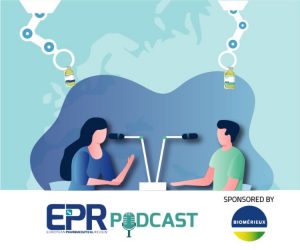
In this episode, Félix Montero Julian, the Scientific Director for the Healthcare Business of bioMérieux and Thomas Jones, Cell & Gene Therapy Business Senior Director at bioMérieux discuss the evolving needs of quality control (QC) for cell and gene therapy (CGT) and how these developments are supporting efforts to scale up manufacturing.
What’s new in the cell and gene therapy landscape?
“For me the most exciting thing is the rapid approval we are seeing for new indications and the expansion to second-line use for existing cell therapy products,” explains Tom Jones.
This year, the US Food and Drug Administration (FDA) approved Bristol Myers Squibb’s Breyanzi® (lisocabtagene maraleucel) and Kite’s Yescarta® (axicabtagene ciloleucel) for second-line treatment of adult patients with large B-cell lymphoma.
Studies are already underway for frontline use, which Tom notes would mean a rapid rise in patients treated with these therapies.
“Kite alone has announced they are looking to treat 25,000 patients a year by 2025. So, if you add to that, the Alliance for Regenerative Medicine’s forecast for regulatory decisions on 17 new cell and gene therapy products by the end of 2023, you can see the potential for an explosion in the number of patients that could be treated with these therapies,” Tom adds.
The role of QC in efforts to scale up manufacturing of cell and gene therapies

Félix Montero Julian, Pharma & Healthcare Scientific Director, bioMérieux
Félix Montero Julian discusses trends in manufacture of cell and gene therapies, including the move to decentralised manufacturing, efforts to integrate manufacturing processes and initiatives to reduce lead times.
“The manufacturing of autologous products takes about three to four weeks…until the patient is infused with the CAR-T product. Companies are trying to reduce these lead times…to one week or even a few days,” Félix says.
“Quality control can be the hold up,” adds Tom. “Probably the most pressing need now is to increase the speed of these QC tests…”
Cell therapy products need the full range of safety, environmental, and cellular quality attribute (CQA) tests. Safety testing includes sterility, mycoplasma testing and endotoxin testing to ensure a product is not contaminated. CQA testing, including identity, viability and potency tests are also critical, to help ensure that patients are getting dosed correctly, Tom explains.
Félix and Tom then go on to discuss efforts to reduce the time of sterility testing and mycoplasma testing, as well as to reduce the complexity for QC for CGT.
“Pharmacopeia chapters describe the detection of mycoplasma in 28 days. That is incompatible with the speed that is required for cell therapy products,” explains Félix.
Nucleic acid testing is one of the means that is used to speed up the detection of mycoplasma in these products. But even assays can be cumbersome and require highly skilled personnel.
Similarly, traditional flow-cytometry – used for CQA testing – require an extremely-dedicated and highly-trained workforce to operate.
“Many of the existing solutions were developed for applications that are less time sensitive and don’t meet the needs for cell and gene therapy manufacturers,” says Tom.
Addressing talent constraints with innovative QC for CGT

Thomas Jones has been Cell & Gene Therapy Business Senior Director for bioMérieux since 2020
The cell and gene therapy field is booming and there is already fierce competition for QC talent, according to Tom.
“Companies face high turnover and the lack of sufficient skilled personnel to perform complex QC testing…”
“As the number of patients grows and the batches grow with them, this talent crunch is really going to threaten the growth of the industry,” he adds.
A key solution to this talent constraint, Tom believes, is to make the QC tests themselves easier to use, so that deep training is not required.
“As an additional benefit…that lessening of complexity, reduces the chance for errors, so you wind up getting to a more consistent QC process,” he adds.
Listen now
To find out about recent trends in cell therapies, as well as how new rapid quality control methods are supporting scale up of manufacturing and helping to address talent constraints, listen to the episode!
Please join the conversation and leave your thoughts in the comments – we love hearing your feedback – and look out for our next episode coming soon!
The post <em>EPR</em> Podcast Episode 16 – Evolving QC for Cell & Gene Therapy – Félix Montero Julian and Thomas Jones, bioMérieux appeared first on European Pharmaceutical Review.
EPR Podcast Episode 15 – Modernising microbiology – Sophie Bailes and Miriam Guest, AstraZeneca
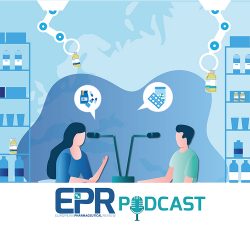
As Pharma 4.0 becomes a reality, a diverse array of technologies have emerged to enhance industrial processes, from the internet of things to artificial intelligence, machine learning and virtual reality. In this episode AstraZeneca’s Sophie Bailes, Associate Director for Digital Transformation and Miriam Guest, Principal Microbiologist, Pharmaceutical Technology & Development, share how these innovations are changing the the microbiology lab and aseptic manufacturing practices for the future.
What are the most significant changes in the microbiology lab?
Virtual and augmented reality
Miriam explains how virtual and augmented reality have emerged as key training tools within AstraZeneca; the power of the virtual reality platform they have applied for their microbiology and sterile manufacturing personnel is that it allows operators to see what they typically cannot: “As an example, air flows are really critical for aseptic processing and microbiology testing. But you cannot see air. Some of us will have been fortunate enough to see smoke visualisation, which we need to do to demonstrate our air flows are good and sound in aseptic processing, but not many people will have been involved in those.

Miriam Guest, Principal Microbiologist, Pharmaceutical Technology & Development
“The virtual reality platform allows you to see the air. It allows you to force the failures… If you intercept the air with your hand, it will show what that could mean for an air flow pattern… To be able to start your training in this virtual platform allows you to see where those critical mistakes could compromise your testing, or in the case of aseptic processing, where it could compromise your aseptic process.”
Sophie adds: “Augmented reality, as well, has started to come in. That is where you can be more aware of your surroundings. You just have a Perspex screen in front of your face where you can actually then not only see different instructions for certain tests, but it means you can actually also automatically link into things like Teams and then talk to people across our global network. This is really useful especially when we have very complex experiments or very complex bits of kit that you may need specialist support with. Actually, the person on the other end of the line can even draw onto the view that you have in front of you. Which is quite odd the first time it happens, but it’s just so useful to then transfer that information.”
Cobots and robots
Personnel will likely always be one of the key points of weakness in any contamination control strategy – and thus minimising the number of people in a sterile environment can be beneficial to control. “One of the things that we use in different areas of pharmaceutical development are cobots and robots actually can replace some of those activities,” says Sophie.

Sophie Bailes, Associate Director for Digital Transformation
“Absolutely. We are seeing people using cobots to automate activities that are routine, so your environmental monitoring, and switching out plates… having those processes done by a cobot or a robot or an automated way, it standardises how they are done. It reduces the subjectivity and the slight nuances of change that you can get from people to people. A cobot knows when it has made a mistake, whereas a person does not always know they have made a mistake… Those advantages are really powerful,” adds Miriam.
Sophie also notes how the use of cobots and automation supports data collection and data integrity: “If we think about the way a cobot would collect data, it would be consistent every time. It removes a lot of the extra data governance that we have to put around those places.”
“One area where we have successfully applied automation is our endotoxin testing. When we were looking at how the network were doing in endotoxin testing, we had one site that was already automated. The data was so powerful about their invalid sample rate compared to the sites that had the people doing the test setup. Our worst case site, they were getting up to 20 percent of runs being invalidated, whereas the site that were automating, it was less than two percent. That is really powerful, because an invalid test is going to cause you problems because you have got to repeat it. If you can reduce how many invalid tests you get, you can save time, be more efficient, and focus your microbiologists on areas where they can really add value,” explains Miriam.
“That is one area of automation. Of course, we will see advances in automation in other tests such as sterility and bioburden testing as we move forward and cobots become more accessible.”
To find out about the application of artificial intelligence and machine learning, as well as how the role of personnel will evolve with the addition of technology, listen to the episode!
Please join the conversation and leave your thoughts in the comments – we love hearing your feedback – and look out for our next episode coming soon!
The post <em>EPR</em> Podcast Episode 15 – Modernising microbiology – Sophie Bailes and Miriam Guest, AstraZeneca appeared first on European Pharmaceutical Review.
EPR Podcast Episode 14 – Breast cancer drug development – Markus Kosch, Daiichi Sankyo
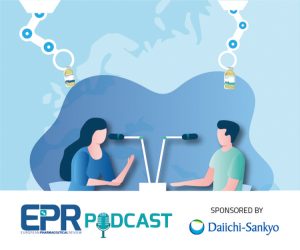
Despite therapeutic advancement over the last few years, unmet need in breast cancer still remains. In this podcast, Professor Dr Markus Kosch, Head, Oncology Business Division Europe at Daiichi Sankyo, discusses the challenges associated with breast cancer treatment and some of the recent therapeutic developments that may help overcome them – highlighting the potential role of antibody-drug conjugates (ADCs).
What are the unmet medical needs in breast cancer?
Markus explains that breast cancer is still the second most common cancer worldwide, with two million cases diagnosed every year, and continues to be a leading cause of cancer-related deaths as >700,000 women die of the disease each year .1

Professor Dr Markus Kosch, Head, Oncology Business Division Europe
“The medical need is still extremely high… yet stopping the disease has proved very challenging… unfortunately one in three women still progresses to a metastatic state.2 While there have been many significant advancements over the last years in metastatic breast cancer, one key challenge is that most patients will eventually develop resistance and disease progression.3 The mechanisms of resistance appear to be different for various molecules and treatment approaches, so as we descend the ladder of lower and later resistance, there has been always one more step, and that is where now the key medical need for those women is,” he comments.
How are therapeutic modalities developing to rise to the needs of breast cancer patients?
“What I find so fascinating about specifically breast cancer research, there is a lot of movement and innovation going on,” commented Markus, adding: “what is most important with any innovation is that it actually serves the patients, it is important that treatments and care improve their quality of life while extending it.”
“I am happy to say that emerging innovations in cancer research today hold the potential to dramatically improve cancer patient care. Next to other innovations, like CAR [chimeric antigen receptor] T and cell and gene therapies… antibody-drug conjugates, I believe, have the potential to really make a difference in cancer treatment moving forward.”4,5
“So-called ADCs are targeted cancer medicines that combine target specificity and anti-tumour activity in a single molecule,” he explains. The idea combines specific targeting of proteins expressed on the surface of cancer cells a very very potent therapy. “So you deliver a very potent therapy very specifically to cancer cells, while avoiding collateral damage to healthy cells. This targeted approach has contribute to growing optimism around the utility in many cancers with solid tumours,” Markus notes.
What could the future of breast cancer care look like?
“So, cancer touches many people… every second person of our generation will face the diagnosis of a malignant disease through their lifetime.6 Due to the progress that we have made, many of those affected people will survive, potentially be cured, or live a long time with their disease. So this is why this therapeutic area never sleeps, and we are constantly striving to improve outcomes, innovate, so that one day cancer may not be viewed as a terminal state of health anymore, but potentially more as a chronic disease,” asserts Markus.
“We believe that systemic disease control is critical to extending survival and delaying especially the development of resistances and further metastasis. The development of new and innovative approaches is really a priority for society,” he adds.
To hear about the impact of COVID-19 on breast cancer care, why collaboration is among the critical factors for achieving a promising future for cancer care and the therapeutic developments being made by Daiichi Sankyo tune in now!
Please join the conversation and leave your thoughts in the comments – we love hearing your feedback – and look out for our next episode coming soon!
References
- Sung H, Ferlay J, Siegel RL, et al. Global cancer statistics 2020: Globocan estimates of incidence and mortality worldwide for 36 cancers in 185 countries. CA: A Cancer Journal for Clinicians. 2021Feb4;71(3):209–49.
- Redig AJ, McAllister SS. Breast cancer as a systemic disease: A view of metastasis. Journal of Internal Medicine. 2013Jul12;274(2):113–26.
- Barok M, Joensuu H, Isola J. Trastuzumab Emtansine: Mechanisms of action and drug resistance. Breast Cancer Research. 2014Mar5;16(2).
- Mounsey LA, Deal AM, Keith KC, et al. Changing natural history of HER2–positive breast cancer metastatic to the brain in the era of new targeted therapies. Clinical Breast Cancer. 2018Feb1;18(1):29–37.
- Martínez-Sáez O, Prat A. Current and future management of HER2-positive metastatic breast cancer. JCO Oncology Practice. 2021Oct1;17(10):594–604.
- Cancer risk statistics [Internet]. Cancer Research UK. 2022 [cited 2022Sep13]. Available from: https://www.cancerresearchuk.org/health-professional/cancer-statistics/risk
The post <em>EPR</em> Podcast Episode 14 – Breast cancer drug development – Markus Kosch, Daiichi Sankyo appeared first on European Pharmaceutical Review.
EPR Podcast Episode 13 – QC spectroscopy compliance – Garry Wright and Julia Griffen, Agilent
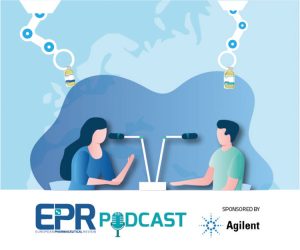
While we all know regulatory compliance is crucial, it can be challenging to meet the expectations within the highly regulated pharmaceutical industry. With spectroscopy instruments being a crucial pharmaceutical analysis tool, and their applications across the pharma industry growing, in this episode Agilent Technologies’ Julia Griffen, Product Manager Raman Products and Garry Wright, European Laboratory Compliance Specialist, highlight some of the common compliance issues companies are facing when leveraging spectroscopy for QC and what to do to overcome them.
What kinds of compliance issues, especially with spectroscopy instruments, are companies struggling with in the QC lab?
Garry explains that in the QC lab, “some of the most common compliance concerns that we see regulated companies facing are things like gaps in their documentation, incomplete investigations, sometimes they struggle to have the skills or expertise to train their staff. Other challenges include struggling to configure and validate their software correctly and implementing data integrity controls.”

Julia Griffen, Product Manager Raman Products
“A lot of the compliance issues we see today with spectroscopy instruments are not specific to the particular instrument platform or software – they are more around the controls needed to minimise compliance and data integrity risk. These need to be implemented consistently across the complete laboratory, regardless of the instrument or software being used,” he adds. One particular issue he highlights is that chromatography tends to be prioritised, as these instruments contributes a lot of good manufacturing practice (GMP) data, where companies tend to give spectroscopy instruments lower priority and, due to a lack of time or resources, do not implement the same level of control working with controls that still present a compliance risk.
“The regulatory requirements for spectroscopy instruments are exactly the same as chromatography instruments… so if you are going to implement technical controls within spectroscopy software, make sure they are applied at the same level as for your chromatography systems,” he asserts. Julia also highlights that she has experienced a knowledge gap when it comes to implementing spectroscopy versus chromatography: “this is an issue that needs to be addressed to ensure compliance – education of the requirements to implement spectroscopy in a compliant manner.”
What impact does a lack of compliance have on companies?

Garry Wright, European Laboratory Compliance Specialist
“Receiving a non-conformance citation can have a significant impact on the future success of your company because, particularly warning letters, are published in the public domain by regulators all over the world. That makes that warning letter readily available to your existing customers, to potential future customers, but also to your competitors,” explains Garry, adding: “I do not think people realise the impact that a warning letter or non-conformance can have on the future of your business because it is clearly visible and can affect existing and future business.”
What are the top five considerations for ensuring compliance with spectroscopy/QC instruments?
Garry highlights five key parameters to focus on:
- how the instrument is used – because companies use instruments differently, the intended use must be defined and this should dictate many aspects, including how the instrument is qualified and how the software is configured and validated
- instrument qualification – qualification should be dictated by how you intend to use the instrument, so your user requirements have been tested to ensure that in practice it is used within the qualified range
- software validation – there are many configurable options and companies will have different requirements for different workflows, “it is really important that you choose the right configuration for your workflow” and this needs to be tested during the software validation phase
- implementing data integrity controls – “although data integrity is not a new topic for industry, we still see a lot of non-conformance coming through for companies who have not configured their software correctly and have not built in the appropriate data integrity controls”
- moving towards fully digital systems – paper based and hybrid systems can be difficult to manage, “so if you are investing in new software platforms, try and go digital from day one – make sure you perform the full workflow within the software, that is all of the data acquisition, the data processing, the data reporting and all the review and approvals at the end without printing out any data”.
To find out why learning from warning letters about compliance failures is critical, how digitalisation and automation are impacting QC lab compliance and so much more, tune in to the episode!
Please join the conversation and leave your thoughts in the comments – we love hearing your feedback – and look out for our next episode coming soon!
The post <em>EPR</em> Podcast Episode 13 – QC spectroscopy compliance – Garry Wright and Julia Griffen, Agilent appeared first on European Pharmaceutical Review.
EPR Podcast Episode 12 – Digital twins in R&D – Loredana Vagaggini, GSK

As the industry works to establish interconnectivity leveraging automation, machine learning and real-time data in the transition to Pharma 4.0, digital twins have emerged as a solution to increase productivity and efficiency in drug development and manufacturing, while also enhancing quality. In our latest episode, Loredana Vagaggini, Senior Manager Principal Product Owner, Vx Tech R&D at GSK discusses the use of digital twins in pharmaceutical development and manufacturing.
What are digital twins and why are they being used by the pharma industry?
Loredana explains how, though there are different types of implementation, all involve the creation of a digital virtual equivalent of a real-life process, product or service. “What varies among the different implementations is the extent to which you build automated connections between the two worlds,” discussing the three stages of automation and thus twins:
- Level one – Digital Model – a virtual copy of something physical
- Level two – Digital Shadow – implementing a data flow to connect the physical world and digital model
- Level three – Full Digital Twin – implementing a flow of data from the physical world to the digital copy and a flow from the digital copy back to the physical.
The major benefits, particularly in the vaccines space, is that digital twins help develop and manufacture products quickly. This, says Loredana, is critical following COVID-19 and something which traditional R&D methods cannot necessarily provide for.
What projects have GSK undertaken with digital twins and how are they used in vaccine technical research and development (TRD)?
“Digital twins are actively being implemented in R&D and manufacturing,” with a range of applications from process development (where Loredana works) to predictive maintenance in manufacturing processes.
“The digital twins [my team] are building are for process development in vaccine TRD. We are working at building a library of twins supporting the different steps of the process,” she explains. They develop mechanistic models based on scientific knowledge to allow them to implement them early in the process, where historical data is minimal. “So we have these mechanistic models and we use them to produce simulated data.. with which we train machine learning models so we can have faster calculations.” She notes that this conversion is necessary, as where mechanistic models may take days to run machine learning models take seconds, and this faster processing time allows them to control the process with the model – creating a Full Digital Twin.
Taking the example of a bioreactor, with real time data input from sensors, Loredana explains how the machine learning models take the input from the real system, estimate the end quality of the batch and, where necessary, identify actions that are fed back to the physical system.
The same models can also be used in an off-line fashion to simulate experiments, allowing development
How could digital twins develop over the next decade?
“Digital twins are still an emerging technology, and their widespread adoption is expected in the next one to three years,” says Loredana, explaining how companies who have been developing them to date are now looking at opportunities to standardise and industrialise their work. “We can expect digital twins to become an integral component of the process development… and to be a part of the transfer to manufacturing. The other thing we can anticipate is having process digital twins connected to supply chain digital twins,” she explains.
Digital twins are pure innovation. They connect and bring together all sorts of business knowledge and technical capabilities and because of that they have the potential to bring an immense value to the patient and make a difference in allowing faster and better [product] delivery” – Loredana Vagaggini, Vx Tech R&D, GSK
To find out more about the benefits realised through digital twins, the technologies required to establish them, as well as what makes them exciting to Loredana, tune into the episode.
Please join the conversation and leave your thoughts in the comments – we love hearing your feedback – and look out for our next episode coming soon!
The post <em>EPR</em> Podcast Episode 12 – Digital twins in R&D – Loredana Vagaggini, GSK appeared first on European Pharmaceutical Review.
EPR Podcast Episode 11 – Developing vaccine technologies – Giulia Giordano and Mark Doherty, GSK

With COVID-19 having intensified the focus on vaccine development over the past few years, in this podcast we are exploring how manufacturing and formulation of vaccines has advanced and some promising technologies for the future. For this episode, European Pharmaceutical Review’s Hannah Balfour is joined by two representatives from GSK: Giulia Giordano, PhD, Vaccine Development Leader, and Professor Mark Doherty, Senior Manager of Global Medical Affairs, Vaccines.
What are some of the latest developments in vaccinology?

Professor Mark Doherty, Senior Manager of Global Medical Affairs, Vaccines
Mark explains that there are four key areas of development for vaccines over the past few years, including in the areas of formulation or delivery (eg, using messenger RNA [mRNA]) and manufacturing. “What they have in common is that we are moving away from processes which were very heavy on synthetic chemistry… instead we are moving to a much more biologically-focused technology or family of technologies, where things that we used to do synthetically are actually coded for by recombinant production organisms,” he stated. The benefits of such a shift are that recombinant biological production techniques simplify the conjugation and purification steps involved in vaccine manufacturing, enabling vaccines to be brought to market faster.
An additional development is the enhancing understanding of how vaccines work at a molecular level, and using this as the basis of vaccine development, something which Mark states has benefited the industry by significantly reducing failure rates.
What is GMMA and why is it a potentially key vaccine technology?

Giulia Giordano, Vaccine Development Leader
Giulia is the Vaccine Development Leader for the generalized modules for membrane antigens (GMMA) technology that GSK is working to develop. She explains how GMMA, outer membrane vesicles produced by genetically modified Gram-negative bacteria, can form the main component of a vaccine. “There are intrinsic characteristic of GMMA that make them a really good choice for a vaccine, for example, their size. So usually they are around 25 to 250nm and that is the right size to facilitate the draining into the lymph node and the uptaking from immune cells,” she stated. Giulia also describes how, coming from bacteria, GMMA is self-adjuvanted because it expresses components such as pathogenic associated molecular patterns (PAMPs), which stimulate an immune response.
“With this technology we can display to the immune system several antigens simultaneously,” she adds, explaining how for bacterial infection and overcoming antimicrobial resistance, the ability to display multiple antigens from several strains of the same or different species of bacteria is key. “GMMA allows us to have one single component with several antigens in the surface, and this is why we call it a multivalent approach.”
The GMMA technology, because of its relatively simple manufacturing process, may also be of critical importance to low income countries. Giulia describes how the process involves just three steps: “One fermentation and two steps of filtration. The first filtration is to separate the bacteria from GMMA and the second filtration is to purify, so to separate GMMA from smaller components.”
You can learn more about GMMA in this article published in Frontiers in Immunology.
How are adjuvanted systems developing?
Mark explains how the advancing molecular understanding of adjuvants is enabling the personalisation of vaccines to optimise vaccine responses for various age groups.
“Over the last 20 years when it comes to adjuvant development, we have moved away from the idea that it is purely an inflammatory or a damaging effect which leads to the increased immune response, to a recognition that there is actually a level of recognition by the innate immune system of these molecules,” states Mark. Moreover, he describes how, at the molecular level, the immune response to an adjuvant is directed by the combination of receptors that recognise PAMPs; “it is the kind of receptors which activate and the magnitude of that activation can actually lead to a whole host of different outcomes.”
This understanding is what allows vaccine developers to design adjuvants that direct targeted immune responses and overcome challenges such as immune senescence in older adults. “What are adjuvants? It has moved beyond just boosting your overall response to specifically manipulating the kind of immune response that you want,” Mark states.
To hear how adjuvant production is developing, as well as how GSK goes about selecting which vaccine technology is applied to develop each vaccine programme, tune in to the episode.
Please join the conversation and leave your thoughts in the comments – we love hearing your feedback – and look out for our next episode coming soon!
The post <em>EPR</em> Podcast Episode 11 – Developing vaccine technologies – Giulia Giordano and Mark Doherty, GSK appeared first on European Pharmaceutical Review.
EPR Podcast Episode 10 – 3D printing pharmaceuticals – Sheng Qi, Simon Gaisford, Clive Roberts

The idea of personalised medicine has been gaining interest in recent years as the drug development and healthcare industries seek to reduce side effects, improve adherence, and thus patient outcomes. As a potential enabler of personalised oral solid dosage forms (OSDs), three-dimensional (3D) printing has garnered significant interest. But despite a surge in research over the last decade, following patents for 3D printers expiring in 2009, so far just one pharmaceutical manufactured using 3D printing has been approved by regulators, Spritam® (levetiracetam), back in 2015. To find out about recent developments in the field, the major hurdles stalling the widespread implementation of 3D printing in commercial manufacturing and more, European Pharmaceutical Review’s Hannah Balfour spoke with Sheng Qi, Professor of Pharmaceutical Material Science and Technology at the University of East Anglia, Simon Gaisford, Professor of Pharmaceutics in the University College London (UCL) School of Pharmacy, and Clive Roberts, Chair of Pharmaceutical Nanotechnology at the University of Nottingham.
Why apply 3D printing in pharmaceutical manufacturing?
Three-dimensional printing turns the traditional manufacturing paradigm of subtracting materials from a block to create the final form on its head, explains Simon; instead you start with nothing and the printer adds material only where you want your object to be, building it up layer by layer. “The reason it is important is because this type of manufacturing allows us to make shapes and geometries which are not feasible with subtractive manufacturing,” he added.

Simon Gaisford, Professor of Pharmaceutics, University College London (UCL) School of Pharmacy.
Sheng went on to explain the two tracks for applying 3D printing in pharmaceutical manufacturing: 1. producing a large batch of tablets, such as with the supply of Spritam, and 2. the personalisation of dosage forms for patients. The latter, said Sheng, is still a very active research field, which over the last five to seven years has been growing really rapidly, because it allows objects to be tailor made: “In terms of pharmaceuticals, you can make the dose the patient needs, as well as tailor the shape to fit the patient’s preference or make a different geometry to ensure your medication can release the drug at the right rate.”
The range of methodologies available for 3D printing enables materials to be processed in different ways, explains Clive, adding that these include inkjet printing, extrusion processes or light polymerisation techniques. “What this means is, however we want to formulate a medicine, there are lots of options not only in the design we want to get to but the materials and process we use. For example, if we have a drug that is very sensitive to temperature, we can use a process that does not use temperature. If we have a drug that wants very precise dosing, we might want to use inkjet printing [because of its high resolution],” he elaborates.
To find out more about the various 3D printing methodologies for pharmaceuticals, read our article.
How close are we to using 3D printing in commercial pharma manufacturing, or is it still primarily a research tool?

Sheng Qi, Professor of Pharmaceutical Material Science and Technology, School of Pharmacy, University of East Anglia
Sheng explains that applications of 3D printing in bulk drug manufacture, such as with Spritam, are likely much closer than personalised applications. Clive expands on this with an example of another 3D printed pharmaceutical called Triastek, currently under development for the treatment of rheumatoid arthritis, which could soon be approved. He explains that this slow uptake of technology is common in the pharmaceutical industries, with resistance until business models and regulatory frameworks become clear.
Clive adds that a potential application of 3D printing is in clinical trial manufacturing. He explains that, even if the final drug product would not be 3D printed, clinical trial volumes should be manageable for 3D printers and would enable the examination of sliding doses. “The 3D printing technology itself, fundamentally, is very highly developed now, but questions remain about clinical practice, safety, distribution and business models. That is where that timeframe of five, 10, 20 years, which can pass in the blink of an eye in the pharmaceutical industry, is,” he said.
The challenge of regulation
Sheng, Simon and Clive explain that the personalised approach is somewhat further away than the bulk substance manufacture, with many potential hurdles and regulation in particular a stumbling block.

Clive Roberts, Chair of Pharmaceutical Nanotechnology, Faculty of Science, University of Nottingham
Simon describes his experience of interacting with the UK’s Medicines and Healthcare Products Regulatory Agency (MHRA) on the topic of 3D printing pharmaceuticals, he explains that a key issue pointed out by the regulator is how a clinical trial can be performed when the manufacturing process can “potentially make an infinite number of doses, so how do you perform an infinite number of trials? One thing they were considering was bracketing: go for the extremes of dose and hope there is a linear response.” Another is around traceability in manufacturing, and heavily dependent on whether pharmacists 3D printing final personalised medications at a pharmacy using provided printer feedstock is considered a manufacturing or a compounding step. “If it is a compounding step, I reckon we will get to the point where we have got printers in pharmacies within the next decade. If it is considered a manufacturing step, I think it is going to be a bit harder, as the pharmacy itself will then become part of the manufacturing supply chain and would have to operate to the same principles,” he noted.
Sheng concludes that regulation is a major concern for the field; “What potentially worries me moving forward with 3D printing is really the regulations… it will be the limiting factor preventing [the 3D printing of pharmaceuticals] from reaching patients.”
The episode goes on to explore the formulation considerations for 3D printing, as well as some alternative applications of 3D printing in the medical field, including its application for biopharmaceuticals, implants and dosage forms aside from OSDs. Listen along to find out about all this and more!
Please join the conversation and leave your thoughts in the comments – we love hearing your feedback – and look out for our next episode coming soon!
The post <em>EPR</em> Podcast Episode 10 – 3D printing pharmaceuticals – Sheng Qi, Simon Gaisford, Clive Roberts appeared first on European Pharmaceutical Review.
EPR Podcast Episode 9 – Future of ATMPs – Jérôme Larghero and Julien Textoris, bioMérieux

In our previous advanced therapy medicinal products (ATMPs) episode Jérôme Larghero, Director of the Department of Biotherapies and the MEARY Center for Cell and Gene Therapy in the Hôpital Saint-Louis, AP-HP, and Julien Textoris, Vice President of Global Medical Affairs, Immunoassays and host response at bioMérieux, discussed the importance of collaboration in developing cell and gene therapies and the processes and quality controls that support their manufacture. In this final episode they join us once again to explain what makes these challenges worth overcoming and the key areas of development expected to shape the future of these critical treatments.
Is the future of cell and gene therapy autologous or allogeneic?
Cell and gene therapies, types of advanced therapy medicinal products (ATMPs), are an exciting emerging class of therapeutics offering potentially huge therapeutic benefit. So far, more than 100 cell and gene therapies have been approved in markets worldwide and many more are under development. However, just five of the chimeric antigen receptor (CAR) T-cell therapies approved are allogeneic, ie, manufactured using cells collected from healthy donors, rather than individual patients.

Jérôme Larghero, Director of the Department of Biotherapies and of the MEARY Center for Cell and Gene Therapy, Hôpital Saint-Louis, AP-HP
Jérôme explains that, from a manufacturing perspective, allogeneic therapies are desirable: “In the autologous situation you have to produce one batch for one patient… it is much easier if you can produce a lot of batches from one, two or 10 different healthy donors and be able to have the drug product ‘on-the-shelf’.” He added that reproducibility can also be a challenge for autologous therapies, because of the inherent differences between individuals, and that it is easier to achieve with allogeneic products, where cells from a limited pool of donors is used. Though he stated that the QC is the same for both allogeneic and autologous cell therapies, producing batches patient by patient requires more quality control testing than producing larger batches, where release tests release say 1,000 doses, which could reduce the cost of these products and make them more accessible.
“In the autologous situation, the question also arose around the timing at which you harvest the cells that will be used for the CAR manufacturing. Of course, it is likely better to harvest the cells early in the development of the disease, rather than after one line, two line, six lines of chemotherapy and/or radiotherapy,” this, Jérôme states, is another reason why using cells from healthy donors may be key, especially as cell therapies are currently typically reserved for later lines of treatment.
He adds that, to date, allogeneic CAR T has not been used for the same indications as autologous: “in the autologous situation, we expect the CAR T to cure the disease. In the allogeneic situation… the therapeutic indication is slightly different; because we know this CAR T will be rejected by the patient, we do not really expect it to cure the disease but we use them more as a bridging therapy, to try to get the disease treated and then go to, for example, an allogeneic product.”
Will the success of CAR therapies in haematological cancers be replicated in solid tumours?

Julien Textoris, Vice President, Global Medical Affairs, Immunoassays and host response, bioMérieux
Jérôme explains that perhaps the most important issues in the solid tumour field is overcoming the immunosuppressive microenvironment that surrounds these cancers: “to date, the reason why there are not so encouraging results in the use of CAR T for solid tumours is mainly due to this problem of microenvironment,” which he says prevents CAR T-cell infiltration and also their ability to destroy cancer cells effectively.
To overcome this issue, Jérôme discusses potential solutions: CAR-T therapies with multiple targets and treatment combination. “One way to overcome this problem is either to have CAR T directed against not only one target, but maybe generate CAR T targeted against two or three different targets, or… to generate CAR T specifically constructed against one target but with the capacity to overcome the immunosuppressive microenvironment. This capacity could be by engineering the CAR T by itself… and another way is to use CAR T with other immunotherapies, combining different approaches,” he explains.
Another area of research is the use of other CAR modified cells, such as CAR natural killer (NK) cells or CAR macrophages, which Jérôme states show promise for solid tumours.
We go on to discuss with Jérôme and Julien which solid tumour type may be the first to receive a CAR cell therapy, as well as some of the non-oncologic diseases treated with cell and gene therapies, such as sickle cell disease and autoimmune conditions. To learn about this, as well as how ATMPs may change the way we pay for therapies in future, listen to the episode now!
Please join the conversation and leave your thoughts in the comments – we love hearing your feedback – and look out for our next episode coming soon!
To listen to the first episode in our ATMPs mini-series with bioMérieux, discussing ATMP manufacturing and QC, click here.
The post <em>EPR</em> Podcast Episode 9 – Future of ATMPs – Jérôme Larghero and Julien Textoris, bioMérieux appeared first on European Pharmaceutical Review.
EPR Podcast Episode 8 – Oral biologic drug delivery with Giovanni Traverso, MIT

In this episode, we discuss one of drug delivery’s greatest challenges: how to orally administer biological therapies, such as antibodies and hormones. To address such an important topic, we are joined by Giovanni Traverso, Assistant Professor in the Department of Mechanical Engineering at Massachusetts Institute of Technology (MIT), and a gastroenterologist at Brigham and Women’s Hospital (BWH), Harvard Medical School. His research focuses on the development of next generation drug delivery systems and biomedical devices to support new modes of drug administration.
Biologic therapies are growing in popularity, accounting for 13 of the 53 new drugs the US Food and Drug Administration (FDA) approved in 2020. Though promising, these therapeutics present several drug delivery challenges, including that their composition makes them liable to damage in the gastrointestinal (GI) tract, requiring them to be delivered intravenously or subcutaneously. While manageable for infrequent treatments, for those who must be injected regularly, such as diabetes patients, being able to simply swallow a pill may seem much more desirable.

Giovanni Traverso, Assistant Professor, Department of Mechanical Engineering, MIT, and gastroenterologist at Brigham and Women’s Hospital (BWH), Harvard Medical School
Giovanni explained that, when discussing the delivery of biologic drugs, he splits the mechanisms into two broad categories: non-physical and physical modes of delivery. “From a non-physical perspective, what I mean is molecules or additives that enhance transport across the mucosa/protective layer in the GI tract… for example, there are a couple of smaller peptides or proteins that actually do exist in an oral formulation and those apply either an additive that transiently enhances transport or the drug has somehow been modified to stabilise it to facilitate its transport,” he explained. These systems are limited by the size of the molecule with smaller peptides, proteins and even insulin able to be delivered in this fashion, but not monoclonal antibodies and other larger molecules.
Physical techniques, he described as those that involve some kind of intervention such as a medical device, eg, a hypodermic needle for injections, or ultrasound at certain frequencies to propel drugs into tissue. “On the physical side we have actually been able to deliver a very broad set of molecules, including monoclonal antibodies,” stated Giovanni.
We went on to discuss his team’s recent work on the development of gastric autoinjectors and how, during the process, they broke it up into three challenges: a. ensuring the sharp needle is always in contact with the desired tissue, b. how to autonomously trigger the drug delivery event/injection, and c. how to fit enough drug within a blueberry-sized device, a safe capsule size for oral administration. They addressed orientation challenges in a paper published two years ago and reviewed materials that could hold energy from a compressed spring, with brittle fracture mechanics, that could sense a humid environment. They eventually designed sugar cylinders that had these elements and could be adjusted to control the rate of dissolution and drug release through the needle.
To overcome the challenge of size and ensure they could deliver enough drug, they developed solid formulations of biologic drugs, such as insulin. However, a fluid dose was more desirable, and in a recent paper published in Nature Biotechnology they displayed the development of a self-orientating gastric autoinjector system able to release a liquid. The research was done in collaboration with Novo Nordisk and demonstrated that the system could deliver insulin, a GLP-1 receptor analogue, adrenaline and adalimumab, a monoclonal antibody.
Then we explore other issues surrounding the oral delivery of biologics, including that future developments into miniaturising these device systems may be necessary to ensure compliance and that not all drugs would be suitable for this kind of administration. “Which drug is the right drug to go into these systems? It is not that you convert every injectable – and there are drugs that I think are more amenable to being administered orally,” explained Giovanni, adding that for instance those drugs with a narrow therapeutic window may not be the best option due to variability in absorption caused by inherent differences in peoples’ GI tracts.
To learn about other drug delivery systems, including those Giovanni has helped develop to allow once-a-month dosing of contraceptives and HIV medications, and how critical biomedical devices are likely to be in overcoming various drug delivery challenges, listen to the episode!
Please join the conversation and leave your thoughts in the comments – we love hearing your feedback – and look out for our next episode coming soon!
Resources
To learn more about gastric autoinjectors, read the paper published in Nature Biotechnology: https://doi.org/10.1038/s41587-021-01024-0
For more information on gastrointestinal-based drug delivery challenges: https://doi.org/10.1038/s41575-021-00539-w
The papers on once-monthly dosing drug delivery systems for contraceptives and HIV medications can be found at: https://www.science.org/doi/10.1126/scitranslmed.aay2602 and https://doi.org/10.1038/s41467-017-02294-6
The paper describing the team’s oral drug delivery screening tissue culture system was published in Nature Biomedical Engineering: https://doi.org/10.1038/s41551-020-0545-6
The post <em>EPR</em> Podcast Episode 8 – Oral biologic drug delivery with Giovanni Traverso, MIT appeared first on European Pharmaceutical Review.
EPR Podcast Episode 7 – Collaboration in ATMP development – Jérôme Larghero and Julien Textoris, bioMérieux

Collaboration has been a huge part of the COVID-19 pandemic response, but it is also hugely important in the development of various other therapeutics. In the second episode in our advanced therapy medicinal products (ATMPs) series Jérôme Larghero, Director of the Department of Biotherapies and the MEARY Center for Cell and Gene Therapy in the Hôpital Saint-Louis, AP-HP, and Julien Textoris, Vice President of Global Medical Affairs, Immunoassays and host response at bioMérieux, discuss the importance of collaboration between academia and industry in the development of ATMPs.
What is the MEARY Center?
The MEARY Center for Cell and Gene Therapy is the ATMP manufacturing centre of the Assistance Publique – Hôpitaux de Paris (AP-HP) – the university hospital trust operating in Paris and its surroundings. AP-HP includes 39 hospitals and is the largest hospital system in Europe. The MEARY Center offers the services, skills and contract development and manufacturing organisation (CDMO) capacities to develop cellular immunotherapies and regenerative medicine. “The centre is first an academic centre dedicated to cell and gene therapy, and to collaboration for projects that are run both with academic and industrial partners,” explains Jérôme. He added that the role of the centre is to develop processes for the manufacturing and QC of cell and gene therapies of various types and for different indications, to allow collaborators to conduct clinical trials of investigational products.
With several hundred cell and gene therapies currently under development worldwide, what limitations are hindering the development and application of cell and gene therapies?

Jérôme Larghero, Director of the Department of Biotherapies and of the MEARY Center for Cell and Gene Therapy, Hôpital Saint-Louis, AP-HP
Jérôme explains that many of the manufacturing and QC problems faced by pharmaceutical and biopharmaceutical developers are also faced by cell and gene therapy developers: “we face exactly the same issues when we have to think about which kinds of quality control, when we have to put in place this quality control and how we have to perform both the manufacturing, quality control and the release of product.” He continued that as with any pharmaceutical, manufacturing for ATMPs must be based on ensuring that, at the end, they deliver a safe product for patients.
Jérôme goes on to explain that because ATMPs have huge heterogeneity, they require specialised manufacturing and QC, which is a challenge. “We all know that two healthy donors are different, because their cells are different. Regardless, at the end, we are supposed to have robust, reproducible processes… much is based on how you qualify your product, and thus which kind of quality control you will put in place,” he remarks.
Another challenge limiting ATMP development and manufacturing is the sheer number of quality control tests required and the time taken to perform these processes, as well as the cost of such testing and its impact on product pricing and accessibility. Jérôme describes how both virologic and microbiological testing are required to ensure products are safe, but microbiological test results take seven to 10 days to come back. Additionally, cellular attributes must also be assessed. The result is that, dependent on the type of product and its specifications, between five and 15 different QC tests are needed with five or 10 in-process controls. Jérôme noted that gene therapies typically requiring a larger number of QC tests than cell therapies.

Julien Textoris, Vice President, Global Medical Affairs, Immunoassays and host response, bioMérieux
He also explained how this impacts product cost, using chimeric antigen receptor (CAR) T-cell therapy as an example: “It is more complex than saying for one batch it is 10 percent of global manufacturing cost, because we forget that when you perform one QC, you are supposed to put in place all the qualification and validation of your methods, which takes a long time… So I think all the costs of developing your quality control should be included as well, so the quality control could represent somewhere between 10 to 20 percent of the cost of the whole drug product.”
“The question is whether we will be able to put in place new technologies to have [microbiology] results in maybe 24 or 48 hours, which will allow the lots or batches to be released much quicker,” states Jérôme.
What can be done to expedite manufacturing and release of ATMPs?
From patient sampling to reinfusion of a CAR T-cell therapy is at least a month long process, according to Jérôme. Included in this timeframe is 15 days of manufacturing and up to 10 days for QC testing such as microbiological analysis. He added that this period can be extremely difficult for patients, who are typically critically ill and on a third or fourth etc line of treatment, to wait and be treated in the meantime. Julien explains how this puts an emphasis on time to result as a critical issue, because patients’ diseases may progress during the manufacturing and QC period.
Jérôme adds that it is not only by improving time to QC test result that this timeline may be shortened, through optimisation and industrialisation of the manufacturing process this time could be further reduced. He describes two potential ways of doing this:
- implementing new technologies or new equipment to try to manufacture quicker and safer, for example, by using bioreactors rather than plastic flasks to support more cells and greater product quality
- for CAR T-cell therapy, limit the ex vivo expansion phase, delivering the cells into patients earlier and allowing them to expand within patient – the safety of which must be further explored first.
With such developments, research suggests that manufacturing could be reduced to one or two days, states Julien, meaning the sterility testing would be five times the length of manufacture. Evidently, developing QC is also important to overcome this issue.
To learn about all this and more, tune in to this podcast!
Please join the conversation and leave your thoughts in the comments – we love hearing your feedback – and look out for our next episode coming soon!
The post <em>EPR</em> Podcast Episode 7 – Collaboration in ATMP development – Jérôme Larghero and Julien Textoris, bioMérieux appeared first on European Pharmaceutical Review.
EPR Podcast Episode 6 – Precision Medicine with Laetitia Decroix Guilloux and Edmond Chan, Janssen

With the market for precision medicine in oncology anticipated to value almost $150 billion by 2030 and the incidence of cancer only rising with the world’s aging population, European Pharmaceutical Review‘s Hannah Balfour sat down with industry experts Laetitia Guilloux and Edmond Chan from the Janssen Pharmaceutical Companies of Johnson & Johnson to find out more about this exciting field.
“Precision medicine is of particular interest because cancer is not homogeneous… precision medicine allows us to more effectively target specific tumour types based on genetic factors,” explains Laetitia, adding that there has been significant growth in precision medicine research over the past decade, particularly for haematology, since it has huge transformative potential. Edmond added that there are three elements to precision medicine: 1) identifying the correct patients for the treatment – precision in diagnosis, 2) giving each patient the best therapy – precision in treatment, and 3) how to monitor patient response – precision in outcome measurement. “I believe precision medicine is a combination of these three pillars and cannot be thought about one without the others,” says Edmond.

Laetitia Decroix Guilloux, Vice President EMEA Commercial Strategy Lead, Oncology, The Janssen Pharmaceutical Companies of Johnson & Johnson
Laetitia and Ed went give examples of the cancers currently being targeted with precision medicine by Janssen, including non-small cell lung cancer (NSCLC) and multiple myeloma, as well as prostate cancer. “If we want, one day, to be able to tackle those cancers [that are difficult to treat]… or even intercept it so early that we can be potentially curing them, and solid tumour is a little bit further away for that, precision medicine and especially the biomarker driven approach will be key,” states Laetitia, enforcing the importance of treatments such as chimeric antigen receptor (CAR) T-cell therapy.
She adds, “We are seeing continuous innovation across the precision medicine spectrum, so many of these technologies are incredibly exciting, and though we’ve made great strides, there are still challenges to overcome and things we can improve on to make them as effective as possible for patients.” For precision in monitoring, Edmond gives the example of developing blood tests, as an alternative to the more invasive bone marrow tests, for assessing minimal residual disease in multiple myeloma patients following treatment.

Edmond Chan, EMEA Therapeutic Area Lead, Haematology, The Janssen Pharmaceutical Companies of Johnson & Johnson
As we discussed the challenges when developing and implementing precision medicines in healthcare, Ed explained the importance of collaboration, particularly with patients: “If we take CAR T for example, CAR T is not the typical off the shelf medicine – it is a process involving many, many steps. The patient journey starts with finding the right patient, then the patients must be referred to a certified CAR-T centre, then blood must be taken for a T-cell extraction, these T-cells must be manufactured or trained to recognise the cancer, then the T cells must be reinfused back to the patient, and then monitoring afterwards. It is a process involving many, many steps and a huge time commitment from patients and their carers.”
When questioned about the challenges in terms of manufacturing precision medicine, Laetitia explained that by their very nature, personalised therapies have an impact on manufacturing “this is due to the fact that they have different requirements than more one-sized-fits-all treatments, so they can require additional expenditure on manufacturing infrastructure.” However, she emphasised that in future precision medicines may also help to optimise the use of healthcare resources and reduce cost overall as a result; “to reach this point, there is a need develop how we deliver autologous manufacturing of these treatments, particularly as precision medicines continue to become a bigger part of the landscape.”
To find out about Janssen’s work in the field of precision medicine, what Laetitia and Edmond believe precision medicine could look like in the next five to 10 years and more – listen to the episode!
We are looking at addressing the urgent need for new, tolerable, targeted therapy options for patients with certain NSCLC mutations… and researching whether there is a way to provide a treatment that can provide the same targeting [as CAR T] while also eliminating the training element” – Laetitia Guilloux
Please join the conversation and leave your thoughts in the comments – we love hearing your feedback – and look out for our next episode coming soon!
The post <em>EPR</em> Podcast Episode 6 – Precision Medicine with Laetitia Decroix Guilloux and Edmond Chan, Janssen appeared first on European Pharmaceutical Review.
EPR Podcast Episode 5 – ATMP manufacturing and QC – Rey Mali, Accellix and Félix Montero-Julian, bioMérieux

Cell and gene therapies, types of advanced therapy medicinal products (ATMPs), are an exciting emerging class of therapeutics offering potentially huge therapeutic benefit. So far, more than 100 cell and gene therapies have been approved in markets worldwide and many more are under development.
Cell therapies have shown promise in treating diseases such as cancer, where chimeric antigen receptor (CAR) T-cell therapies have already transformed care for haematological malignancies, and gene therapies offer a potentially one-time curative treatment for genetic disorders.
Yet despite their potential, there are challenges facing cell and gene therapies. In this podcast, Rey Mali, Vice President Sales and Marketing, Accellix, and Félix Montero-Julian, Healthcare Scientific Director, bioMérieux discuss the difficulties in manufacturing and ensuring the quality of cell and gene therapies, why speed is particularly important in their quality control and some of the key technologies involved in these quality assessments.
To begin, Félix discussed the three categories of products within cell and gene therapies: in vivo gene therapy, in which viral vectors comprising nucleic acids are used to alter the human genome; cell therapy, which utilises unmodified living cells to treat patients, an example may be a stem cell transplant; and gene modified cell therapy, such as CAR T cells, using cells modified outside of the body to treat patients.

Rey Mali, Vice President Sales and Marketing, Accellix
Rey explained that ATMPs are popular for drug development because they enable the treatment to be tailored to the patient, which is particularly desirable in the treatment of cancer, because other existing therapies, such as chemotherapy, are less specific and as a result have a range of off-target effects which can harm the patient. “The biggest benefit is really providing a personalised treatment that is tailored to the patient and is targeted towards the disease,” explained Rey. Félix added that cell and gene therapies are exciting because there are so many questions yet to be answered surrounding how to enhance their efficacy and manufacturing, leaving a world of discoveries waiting to be made.
When asked what challenges there are in developing and manufacturing ATMPs, Rey explained that there are many: from finding the right target to assessing safety and toxicity and recruiting patients for trials. “We are developing a biological therapy, so that on its own has multiple challenges. We are using tools such as gene editing which 15 years ago were thought of as science fiction, today we are using it to change cells to target a specific ailment,” stated Rey. For manufacturing, which takes on average 18 to 24 days, there are many quality control checkpoints, assessing everything from sterility to potency to cell viability and purity. For CAR-T therapy, for example, said Rey, there is huge complexity in the manufacturing process – taking blood from a patient, finding the target cell type, changing that cell and then growing enough of it to treat the patient. As a result, “being able to offer that to all patients suffering from that ailment is very challenging because the process is lengthy, there are multiple quality checkpoints and it is very, very expansive.”

Félix Montero-Julian, Healthcare Scientific Director, bioMérieux
We also discussed the impact of smaller production volumes on manufacturing, Félix explained: “because the production volumes are lower, we need to minimise how much is taken to do all the QC testing… we want to keep all the materials available to treat the patient.” In addition, he said that the majority of patients treated with cell and gene therapy products are in bad condition as they are typically used as the last line of treatment (third or fifth line), therefore, we want to maximise the volume of product available for treatment and produce them fast enough to meaningfully help the patient. For this reason, time to results with the analytical techniques involved is critical, as is minimising the amount of hands-on manipulation of samples to give a clear picture of product quality.
Rey and Félix also outlined the two key types of critical quality attributes needing to be tested with cell and gene therapies: those that affect safety – the presence of mycoplasma, microbial content and detection of endotoxins – and secondly the cellular quality attributes – cell viability, phenotyping and purity. They added that QC for cell and gene therapies is totally different from QC for even other biopharmaceuticals, such as monoclonal antibodies, because the cells involved are alive. “Every cell from one patient to another may be different,” explained Félix, “so this is challenging to have standardised protocols that can consistently measure [the quality attributes]. We are still discovering how to control these products, what are the best analytical technologies to use and what are the most relevant data… how to use this data to adapt processes.”
We went on to discuss further why speed is crucial in QC, what techniques are currently used for the analysis of quality for cell and gene therapies and how Accellix and bioMérieux are teaming up to bring solutions to market that can reduce the time taken for QC testing from days to hours or minutes. Find out about all of this and more in this podcast, supported by bioMérieux.
Enjoyed this podcast? Let us know in the comments and look out for European Pharmaceutical Review’s next episode, coming soon!
The post <em>EPR</em> Podcast Episode 5 – ATMP manufacturing and QC – Rey Mali, Accellix and Félix Montero-Julian, bioMérieux appeared first on European Pharmaceutical Review.
EPR Podcast Episode 4 – UV/Vis in mRNA vaccine QC with Dr Hans-Joachim Muhr, Mettler Toledo

With their success in the fight against COVID-19, messenger RNA (mRNA) vaccines have taken the world by storm. However, despite existing in the literature for years, the pandemic was the first time an mRNA vaccine had been granted regulatory approval, and thus, for much of the industry, this is the first time manufacturing and ensuring the quality of mRNA vaccines. With Pfizer revealing >50 percent of its COVID-19 vaccine’s production time being devoted to testing and quality assurance, what techniques enable mRNA vaccine quality to be assessed at each stage?
In this podcast, Dr Hans-Joachim Muhr, Head of SPG UV/VIS at Mettler Toledo GmbH, Analytical, explains the key QA/QC considerations for mRNA vaccines, and how ultraviolet–visible (UV/Vis) spectrophotometry can be applied synergistically with other analytical techniques throughout the vaccine development and production lifecycle to ensure quality.
UV/Vis spectrophotometry is a type of absorption spectroscopy which detects to what extend a sample absorbs visible and ultraviolet light to determine its chemical composition.

Dr Hans-Joachim Muhr, Head of SPG UV/VIS at Mettler Toledo GmbH, Analytical
When asked what the challenges are when ensuring the quality of mRNA vaccines, Dr Muhr explained that one of the major challenges is that, despite the successes of the vaccines, “we are still in the development of COVID-19 vaccines and the quality check processes are still not fully established with the manufacturers. They are trying to set up a universally standardised protocol to maintain the integrity and safety throughout the manufacturing.”
He described how UV/Vis could contribute to ensuring vaccine quality and safety in conjunction with other analytical methods such as electrophoresis, HPLC, etc, “because every technique is unique based on its principle. Every analytical technique determines specific parameters, such as melting point, provides different information about substance purity… these are like individual puzzle pieces that then need to be correctly set together to yield the correct picture.”
UV/Vis should be applied for mRNA vaccine QA/QC because it is a simple and well established analytical test method documented in pharmacopoeias, which can give accurate results quickly, according to Dr Muhr.
He went on to explain how UV/Vis could be applied in three separate aspects of mRNA vaccine development and QC: analysis of lipid nanoparticles during R&D, assessing raw materials at the beginning of production and measuring the purity and concentration of vaccine product during quality control.
Find out about all of this and more in this podcast, supported by Mettler Toledo GmbH.
Enjoyed this podcast? Let us know in the comments and look out for European Pharmaceutical Review’s next episode, coming soon!
Essential resources
- UV/Vis spectrophotometry supporting mRNA vaccine research whitepaper: read here
- Life Science Applications in UV/VIS Spectroscopy Webinar: watch now
- Mettler Toledo’s Life Science Toolbox: Life Science Applications in UV/VIS Spectrophotometry
- Mettler Toledo’s Nucleic Acid Poster
- Software and Data Integrity: Data Integrity – Compliance Solutions for UV/VIS Spectrophotometry (Mettler Toledo)
The post <em>EPR</em> Podcast Episode 4 – UV/Vis in mRNA vaccine QC with Dr Hans-Joachim Muhr, Mettler Toledo appeared first on European Pharmaceutical Review.
EPR Podcast Episode 3 – Inhaled and intranasal drug formulations and delivery – Dr Bill Williams, University of Texas

Inhaled and intranasally delivered drugs and vaccines have garnered a lot of attention since the dawn of the COVID-19 pandemic, with the desire to reduce the likelihood of side effects by delivering therapeutics and prophylaxis specifically to their site of action in the respiratory system. To find out more about inhaled and intranasal drugs and vaccines, and their formulation, EPR’s Assistant Editor, Hannah Balfour, spoke to Dr Robert O. “Bill” Williams III – the Division Head and Professor of Molecular Pharmaceutics and Drug Delivery at the University of Texas at Austin. We also explore the thin film freezing (TFF) technique he helped develop, which is currently being used to formulate more stable biologic drugs, such as a shelf-stable messenger RNA vaccine for COVID-19 (which we recently reported) and Takeda’s norovirus vaccine, among others.

Dr Robert O “Bill” Williams III
[Credit: University of Texas at Austin].
To begin, we discuss why drugs are delivered via routes aside from injection or simply swallowing a tablet, as well as some of the benefits of these methods. “These are drugs that are in either a liquid or solid powder form that are administered either to the lungs (for inhaled delivery) or into the nasal passages (for intranasal delivery)… they require a device used by the patient to facilitate the administration,” explained Bill. He added that, beyond just the obvious benefits of local drug delivery to the site of action, these methods are particularly beneficial for drugs that have poor solubility and thus low bioavailability, as they bypass the potential for the drug to cause side effects as it a poorly soluble drug is cleared through the gastrointestinal tract rather than being properly absorbed. Additionally, when replacing traditionally injected formulations with inhaled/intranasal ones, another benefit is that they require less equipment, such as needles and refrigeration, which is key is situations such as the COVID-19 pandemic where these are in short supply.
Bill explained that his lab has two key focuses in terms of formulation for vaccines for COVID-19: stabilising an injectable liquid so that it no longer requires cold chain storage and using dry powder formulations of stabilised biologics or antigens needed to generate an immune response with commercially available low cost powder inhalers. He also explained why the ability of inhaled and intranasal vaccine delivery methods to illicit a mucosal immune response – because the mucosal tissue is the initial point of contact for viruses within people, having an immune response that can prevent or reduce the likelihood of infection at that initial entry point effectively prevents an infection from ever forming.
My lab has really been working to try and optimise the characteristics of the powder, such that it can be used in multiple commercially available low cost dry powder inhalers”
From there we jumped to the formulation aspects of inhaled and intranasal drug delivery, with Bill describing the three different drug delivery devices currently in use – pressurised metered dose inhalers, nebulisers and dry powder inhalers – as well as their advantages and pitfalls. He explained why powder formulations may be more beneficial than liquid, stating it is primarily because of their stability, before he went on to discuss TFF, a novel cryogenic powder formulation technique that he and his research associates developed. “My lab has really been working to try and optimise the characteristics of the powder, such that it can be used in multiple commercially available low cost dry powder inhalers and gain the benefit of that type of delivery to the lungs,” he stated. Continuing that TFF came out of a collaboration with a large chemical company, when they attempted to create a specific powder morphology that facilitated delivery to the lungs. They found that using a temperature between lyophilisation and traditional freeze-drying resulted in a powder that was very stable, at minimum able to be stored in a refrigerator and sometimes at room temperature, and has a brittle matrix morphology that makes it highly shearable, enhancing their ability to be inhaled.
Bill then discussed some of the current applications of the TFF technology – including enhancing the stability of Takeda Vaccine’s norovirus vaccine. “We laid out the premise that in the liquid form, or even the frozen form, that the antigen was losing activity… but in the paper we showed that through TFF this norovirus vaccine could be stabilised – we are up to several months at 40°C,” he enthused, an amazing achievement since most vaccines require cold chain storage and Pfizer and BioNTech’s mRNA COVID-19 vaccine required ultra-low refrigeration (-70°C or -80°C) to be distributed originally.
What excites me and my research group is that there are so many opportunities to improve upon delivery systems that are out there… for instance, mRNA vaccines have been around in the literature a while but no-one had ever solved their stability and that limited how they were ultimately delivered. Thank heavens we have them now… but still there is a lot of improvements that could be made to existing delivery systems to convert them from an injectable to an inhaled or nasally administered, easy to use dry powder” – Dr Bill Williams
If you want to hear about all this and more – listen to the episode!
Please join the conversation and leave your thoughts in the comments – we love hearing your feedback – and look out for our next episode coming soon!
The post <em>EPR</em> Podcast Episode 3 – Inhaled and intranasal drug formulations and delivery – Dr Bill Williams, University of Texas appeared first on European Pharmaceutical Review.
EPR Podcast Episode 2 – Bioavailability enhancement with Dr Deanna Mudie, Lonza
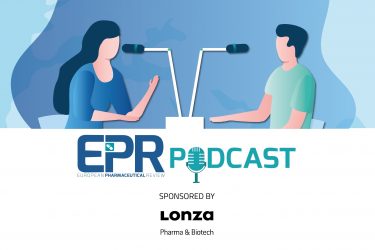
In European Pharmaceutical Review’s latest podcast episode, supported by Lonza, Assistant Editor Hannah Balfour discusses all things bioavailability with Dr Deanna Mudie, a Principal Scientist in Research and Development at Lonza’s site in Bend, Oregon, US.
“For oral drugs, bioavailability is the fraction of the administered dose that actually reaches your systemic circulation unchanged,” explains Deanna, continuing that it must be high to ensure all or most of the drug can reach its site of action for the best therapeutic effect. She went on to explain how dissolution and solubility both factor into how much drug reaches the circulation and some of the key drug properties that affect them, including particle size and lipophilicity.

Dr Deanna Mudie, Principal Scientist in Research and Development at Lonza’s site in Bend, Oregon, US
Deanna also outlines the various methods for improving bioavailability, including reducing the particle size of a crystalline drug or using a salt form, as well as formulation techniques like creating amorphous solid dispersions (ASDs). “Another method which is generally more challenging… is by improving the permeability of the drug,” which she states can be done by creating a pro-drug or by including permeation enhancers or utilising nano-sized drug species.
She also goes into more depth about ASDs specifically, adding that they work by using the amorphous form of the drug instead of the crystalline one, as it has a higher solubility, and outlining their various benefits and a few examples currently on the market.
Deanna also discusses how, with any drug product, drug developers need to make sure that they not only achieve high performance in the body but that they also remain stable over the drug product shelf life. To ascertain its performance in the body, they use a kind of in vitro analysis called dissolution testing, which simulates the gastrointestinal environment, using different fluids and other physical properties to determine how fast and how much of a drug would transition from the gastrointestinal tract to the bloodstream.
in vitro dissolution testing has really been the gold standard for helping to assess, not only how quickly, but also to what extent a drug appears in the bloodstream”
However, the diverse range of potential medias can be challenging, so Deanna explained Lonza’s three step approach for selecting the right media: determine the testing goal, ascertain the target population of interest (eg, human, canine, etc) and select the dissolution apparatus and media that represents the key features of the properties that may affect the drug in this species. “When you use a dissolution medium selection approach like this it can be really powerful because it combines the knowledge of key physiological properties with the drug formulation properties… this can enable ‘right first time’ development, reduce the costs and increase the development speed of medicine,” states Deanna.
Find out about all of this and more in this podcast, supported by Lonza.
Enjoyed this podcast? Let us know in the comments and look out for European Pharmaceutical Review’s next episode, coming soon!
The post <em>EPR</em> Podcast Episode 2 – Bioavailability enhancement with Dr Deanna Mudie, Lonza appeared first on European Pharmaceutical Review.
EPR Podcast Episode 1 – Richard Daniell, Teva Pharmaceuticals

In European Pharmaceutical Review’s first podcast, Deputy Editor Victoria Rees discusses the current and future states of pharmaceutical supply chains with Richard Daniell, Executive Vice President of European Commercial at Teva Pharmaceuticals.
“Today, India and China dominate where active pharmaceutical ingredients (APIs) come from,” says Daniell, explaining how the pharmaceutical market in Europe is supported by a global supply chain. However, he emphasises that a key aspect is balance – ensuring that a global supply chain is in place without being too reliant on one particular area is the ideal scenario.
Daniell also discusses the COVID-19 pandemic and how this has impacted supply chains; for example, when certain factories were shut down, the flow of medicines such as paracetamol was disrupted worldwide. He says that a new challenge arose as a result of the pandemic, creating medicine nationalism with restrictions. Daniell explains why countries need to instead work together to ensure that medicines are delivered to the patients that need them.
We also explore how disruptions to pharmaceutical supply chains can impact patients and thus why it is important to mitigate these as much as possible. As a result, we discuss how policy makers can work to diminish any issues in the medicine supply chain – for example, through collaboration and digitalisation. Daniell highlights that pharmaceutical companies are also responsible for the undisrupted flow of medicines, alongside governments: “we’ve absolutely got our part to play to play in tackling and preventing shortages or any interruption in supply chains.”
Listen to all this and more in our first podcast.
Look out for European Pharmaceutical Review’s next podcast, coming soon!
The post <em>EPR</em> Podcast Episode 1 – Richard Daniell, Teva Pharmaceuticals appeared first on European Pharmaceutical Review.
En liten tjänst av I'm With Friends. Finns även på engelska.